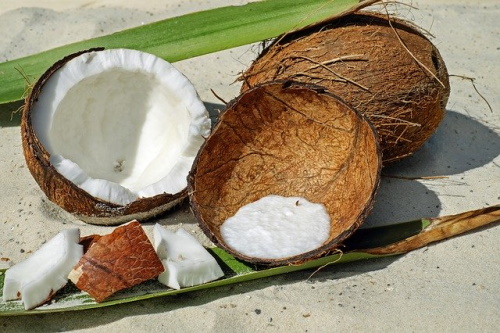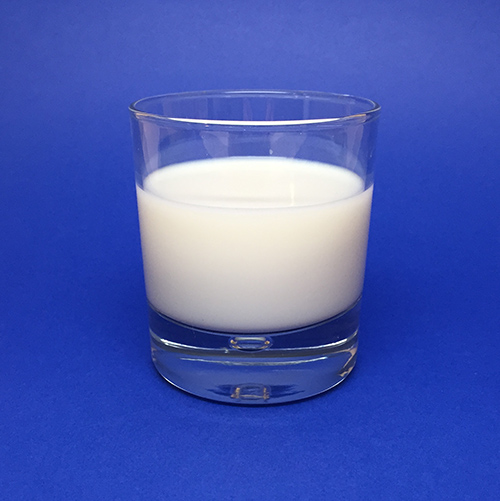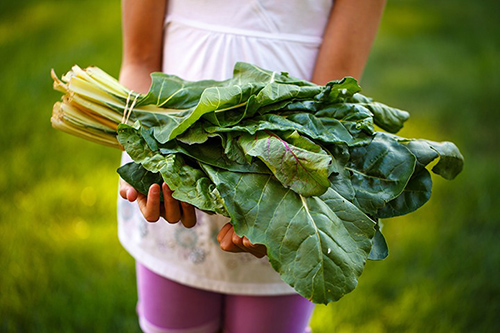Contents
Here is a list of the best foods for osteoporosis. However, before getting to the list, let’s examine some facts about this condition. Osteoporosis is the reduction of bone mass and density to the point that it can result in bone deformation or fracture. In reality, loss of bone mass is a natural process beginning around the age of 40 or 50. However, it is only called osteoporosis when it reaches a pathological level.

Several factors can play a role in the prevention or halting of this loss of bone mass, thus reducing the risk of osteoporosis:
Taking in enough calcium during childhood, when the skeleton is developing. Children and adolescents whose calcium intake is insufficient risk suffering osteoporosis as adults. Adults, as well, must take in a certain amount of calcium since bone is being formed and destroyed continually during the entire life. The RDA (Recommended Dietary Allowance) of calcium for adults is between 500 and 800 mg to replace this mineral’s losses and form new bone tissue. This is why making the best foods for osteoporosis a main part of your diet is important.
Menopause can Encourage Calcium Loss

Reduction in the elimination of calcium: Excess proteins, salt, and caffeine increase urinary calcium loss. A diet based on meat, fish, and shellfish also acidifies the blood. The body tries to compensate for this excess acidity by releasing alkalizing mineral calcium from the bones. In this way, bones are deprived of calcium, fostering osteoporosis. Fruits and vegetables are alkalizers, and though they contain little calcium, they halt the urinary loss of this mineral from the bones.
The reduction in hormone production that accompanies menopause also encourages calcium loss. This is more pronounced in some women than in others. Soy and its derivatives contain phytoestrogens that can partially compensate for this reduced ovarian production, reducing the risk of osteoporosis. This makes soy one of the best foods for osteoporosis.
Sufficient sun exposure: Sunlight is necessary for vitamin D synthesis in the skin. This vitamin is essential in transferring calcium from the intestine to the bloodstream. Fair-skinned people produce sufficient vitamin D with exposure to the sun from 5 to 10 minutes a day. Darker-skinned people require twice as much or more.
Sufficient physical exercise: Those with a sedentary lifestyle experience more bone destruction than formation. Physical exercise halts the loss of bone mass and helps prevent osteoporosis.
The right foods for osteoporosis are the most influential factor in preventing this condition, not only during adulthood but also in infancy and childhood. The more calcium retained within the skeleton during development, the greater the reserve for the adult, and the latter the onset of osteoporosis. Here is a list of the best foods for osteoporosis:
Best Foods For Osteoporosis
CALCIUM: This is the most important mineral in bone formation, although not the only one (magnesium and phosphorus are also involved). Milk and certain other dairy products are good sources of calcium, although plant-based foods such as almonds, cabbage, and oranges provide easily absorbed calcium. The oxalic acid in chard, spinach, rhubarb, and phytic acid in wheat bran interfere with calcium absorption.

MILK: Milk is among the best foods for osteoporosis because it is a great source of calcium (around 120 mg/100 g). The bioavailability (the portion that is absorbed) of this calcium is quite high (20% to 40%) since lactose (milk sugar) and vitamin D facilitate its absorption. Although milk and dairy products are not the only sources of calcium, their consumption during childhood and adolescence helps prevent osteoporosis in adulthood.
DAIRY PRODUCTS: Yogurt, whey, and cottage cheese are good sources of calcium. Yogurt is particularly beneficial as it is a biotic food (it contains live microorganisms) that enhances the condition of intestinal bacterial flora. These intestinal bacteria synthesize, among others, vitamin K, which improves calcium utilization.
SOY: Soy has been shown effective in halting the loss of bone mass resulting after menopause. This loss is a consequence of reduced ovarian hormone production. Soy and soy derivatives, particularly tofu, provide plant-based hormones (phytoestrogen such as isoflavones) that replace those produced by the ovaries and enhance the mineralization of the skeletons. Soy also provides calcium.
Cabbage Ranks as One of The Best Foods for Osteoporosis

ALMOND: Almonds are among the best foods to prevent osteoporosis, thanks to them being a great source of calcium. They also contain a well-balanced supply of the other two minerals required for bone formation: phosphorus and magnesium. Because they are alkalizing, they aid in calcium retention in the body. Almonds and almond milk are very useful in osteoporosis prevention.
TOFU: Of all soy derivatives, this is the richest in phytoestrogens, which help prevent bone calcium loss. It also provides considerable calcium (105 mg/100 g), almost twice that of cottage cheese.
CABBAGE: All varieties of cabbage, broccoli, and cauliflower are good sources of calcium since they contain approximately 20-50 mg/100 g (milk contains 119 mg/100 g). Cabbage contains none of the spinach’s oxalic acid or the phytic acid found in grains, two substances that interfere with calcium absorption. As a result, the calcium in cabbages is very well absorbed, which ranks it high on the best foods for osteoporosis list.
SPROUTS: Sprouts are a good source of easily absorbed minerals, including calcium. They’re not top of the list of the best foods for osteoporosis, but they’re still important.

MOLASSES: Molasses is rich in minerals, unlike white sugar, which contains virtually none ( raw or brown sugar provides less than half of molasses). One hundred grams of molasses provide one-fourth of the RDA (Recommended Dietary Allowance) of calcium and two-thirds that of magnesium. Molasses is the ideal sweetener for osteoporosis prevention.
COCONUT: Both the pulp and the milk of the coconut contain balanced proportions of the bone-forming minerals: calcium, phosphorus, and magnesium.
ALFALFA: Alfalfa sprouts are remineralizers because of their balanced calcium, phosphorus, and magnesium content. They also contain vitamin K, which has been discovered to improve calcium utilization in the bones and potentiate the action of vitamin D. Consequently, alfalfa sprouts increase bone mineralization and help prevent osteoporosis.
Turnips are The Richest In Calcium of All Vegetables
ORANGE: Oranges are also on the list of the best foods for osteoporosis, thanks to their richness in calcium. A glass of orange juice provides approximately a third of an equal-sized glass of milk. Orange prevents osteoporosis because it contains minerals, trace elements, calcium, and vitamin C necessary for healthy bones.

LEAFY GREEN VEGETABLES: All of these are on the best foods for osteoporosis list for their richness in calcium. Chard, for example, provides 119 mg/100 g, almost the same as milk. However, the bioavailability of the calcium in chard or spinach is less than that of milk because of the oxalic acid they contain, which reduces its absorption (but does not stop it). All varieties of cabbage contain calcium, although in a lower proportion than chard or spinach. However, the calcium in cabbages is better absorbed since they contain no oxalic acid.
TURNIP: Turnip greens are the richest in calcium of all vegetables. They contain a small amount of oxalic acid that interferes with the absorption of this mineral. However, their calcium concentration is so high that, despite this, turnips are a good source of this mineral.
VITAMIN D: Vitamin D is essential to transporting calcium from foods in the intestine through the intestinal wall and into the bloodstream, where it may be utilized by the body. Exposure to the sun for a few minutes a day allows the skin to produce enough vitamin D. However, in less sunny regions, taking a vitamin D supplement or eating foods enriched with this vitamin may be necessary.
VITAMIN SUPPLEMENTS: In addition to vitamin D, vitamins K, B6, and B12 are also necessary for bone formation and avoiding osteoporosis. Under certain circumstances, they may be taken as supplements.
DISCLAIMER: Any content on this website is presented solely for educational and informational objectives. You should not rely on the information provided as a replacement for advice, diagnosis, or treatment from a qualified medical expert. If you are pregnant, nursing, or have any preexisting medical concerns, you should talk to your doctor before using any herbal or natural medicines.
REFERENCES
- George D. Pamplona-Roger, M.D. “Encyclopedia Of Foods and Their Healing Power.” George D. Pamplona-Roger, M.D. Encyclopedia Of Foods and Their Healing Power. Trans. Annette Melgosa. Vol. 2. Chai Wan: Editorial Safeliz, 2005. 313-314. [best foods for osteoporosis]
- National Institutes of Health Office of Dietary Supplements: https://ods.od.nih.gov/factsheets/Calcium-HealthProfessional
- Mayo Clinic: https://www.mayoclinic.org/healthy-lifestyle/nutrition-and-healthy-eating/expert-answers/vitamin-d-deficiency/faq-20058397
- Academy of Nutrition and Dietetics: https://www.eatright.org
- Harvard Health Publishing: https://www.health.harvard.edu/topics/osteoporosis/all
- National Osteoporosis Foundation: https://www.ncbi.nlm.nih.gov/pmc/articles/PMC4121694
- American College of Sports Medicine: https://pubmed.ncbi.nlm.nih.gov/7791573
- NIH Osteoporosis and Related Bone Diseases National Resource Center: https://www.verywellhealth.com/who-treats-osteoporosis-6825058
- MedlinePlus: https://medlineplus.gov/osteoporosis.html
- International Osteoporosis Foundation: https://www.nutrition.gov
- National Osteoporosis Foundation: https://www.bonehealthandosteoporosis.org/
- The National Institute of Arthritis and Musculoskeletal and Skin Diseases: https://www.niams.nih.gov/health-topics/osteoporosis/syndicate
- International Osteoporosis Foundation: https://www.osteoporosis.foundation
